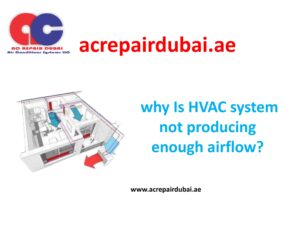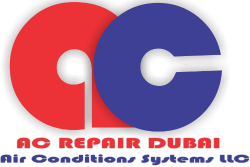why Is HVAC system not producing enough airflow?
Understanding HVAC Systems and Airflow
Heating, Ventilation, and Air Conditioning (HVAC) systems are essential for maintaining comfortable indoor environments by regulating temperature, humidity, and air quality. Adequate airflow is crucial for efficient HVAC performance. When an HVAC system fails to produce sufficient airflow, it can lead to discomfort, decreased energy efficiency, and potential damage to the system components.
Importance of Proper Airflow
Comfort and Performance
Proper airflow ensures that conditioned air reaches all areas of a building, maintaining consistent temperatures and comfort levels throughout. Inadequate airflow can result in hot or cold spots, making certain areas uncomfortable while leaving others unaffected.
Energy Efficiency
Efficient airflow is essential for optimizing the energy efficiency of an HVAC system. When airflow is restricted or insufficient, the system has to work harder to achieve desired temperature levels, leading to increased energy consumption and higher utility bills.

System Longevity
Proper airflow helps prevent overworking of HVAC system components, such as the blower motor and compressor. Prolonged inadequate airflow can lead to premature wear and tear, reducing the lifespan of the system and necessitating costly repairs or replacements.
Common Causes of Inadequate Airflow
1. Dirty or Clogged Air Filters
Air filters trap dust, debris, and other particles to maintain indoor air quality and protect HVAC components. Over time, filters can become clogged with dirt, restricting airflow. Regular filter maintenance is essential to prevent this issue.
2. Blocked Air Vents or Registers
Blocked or closed air vents and registers can obstruct airflow, preventing conditioned air from circulating effectively throughout the building. Furniture, curtains, or other objects may inadvertently block vents, impeding airflow.
3. Damaged or Ductwork Issues
Leaks, holes, or disconnected ductwork can significantly reduce airflow by allowing conditioned air to escape before reaching its intended destination. Poorly designed or improperly installed duct systems can also restrict airflow.
4. Faulty Blower Motor
The blower motor is responsible for circulating air throughout the HVAC system. A malfunctioning or failing blower motor can result in reduced airflow or complete system failure. Common issues include motor overheating, worn bearings, or electrical problems.
5. Fan Issues
The fan, located within the air handler unit, plays a crucial role in moving air through the HVAC system. Problems with the fan blades, motor, or fan belt can impede airflow. Insufficient lubrication, worn components, or motor failure are common issues.
6. Improper HVAC Sizing
An HVAC system that is too small for the space it serves may struggle to deliver adequate airflow to meet heating or cooling demands. Conversely, an oversized system may short cycle, leading to inefficient operation and inadequate airflow.
7. Closed or Blocked Dampers
Dampers control the flow of air through ductwork by opening or closing to redirect airflow. Closed or blocked dampers can restrict airflow to specific areas of the building, leading to uneven temperatures and reduced comfort.
8. Refrigerant Issues
In air conditioning systems, refrigerant plays a vital role in absorbing and releasing heat to cool indoor spaces. Low refrigerant levels due to leaks or improper charging can impair the cooling process, reducing airflow and efficiency.
Diagnosing and Resolving Airflow Issues
1. Regular Maintenance
Routine HVAC maintenance, including filter replacement, duct inspection, and system cleaning, is essential for ensuring proper airflow and system performance. Professional HVAC technicians can identify and address potential airflow issues during maintenance visits.
2. Air Filter Replacement
Regularly replacing air filters according to manufacturer recommendations is crucial for preventing airflow restrictions caused by dirty or clogged filters. Clean filters promote efficient airflow and maintain indoor air quality.
3. Clearing Blocked Vents
Inspecting and clearing blocked or obstructed vents and registers allows for unrestricted airflow throughout the building. Rearranging furniture or removing obstacles near vents can improve airflow distribution.
4. Duct Inspection and Repair
Professional duct inspection can identify leaks, damage, or design flaws that impede airflow. Sealing leaks, repairing damaged ductwork, and optimizing duct design improve airflow efficiency and system performance.
5. Blower Motor Maintenance or Replacement
Regular maintenance, including lubrication and inspection of the blower motor, helps prevent issues that can hinder airflow. If the blower motor is faulty or failing, timely repair or replacement is necessary to restore proper airflow.
6. Fan Repair or Replacement
Addressing fan issues, such as damaged blades, motor failure, or belt wear, is essential for maintaining adequate airflow. Professional diagnosis and repair or replacement of fan components restore proper operation and airflow.
7. Ductwork Modification or Replacement
In cases of severely restricted airflow due to ductwork issues, modifying or replacing the duct system may be necessary to improve airflow distribution and system performance.
8. HVAC System Evaluation and Upgrades
Consulting with HVAC professionals to evaluate system sizing, efficiency, and performance can identify opportunities for upgrades or modifications to improve airflow and overall system operation.



